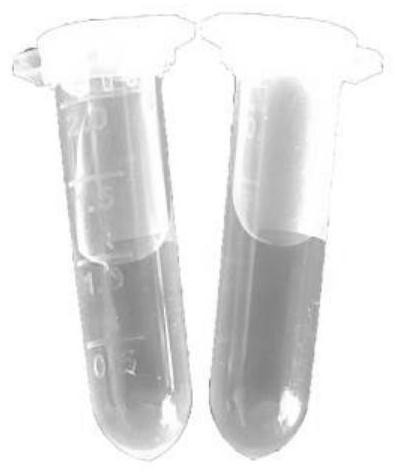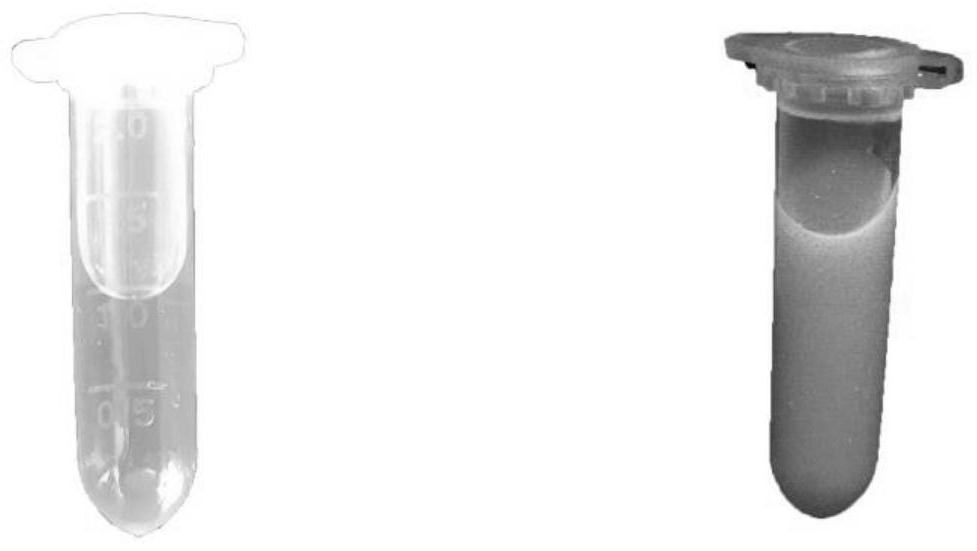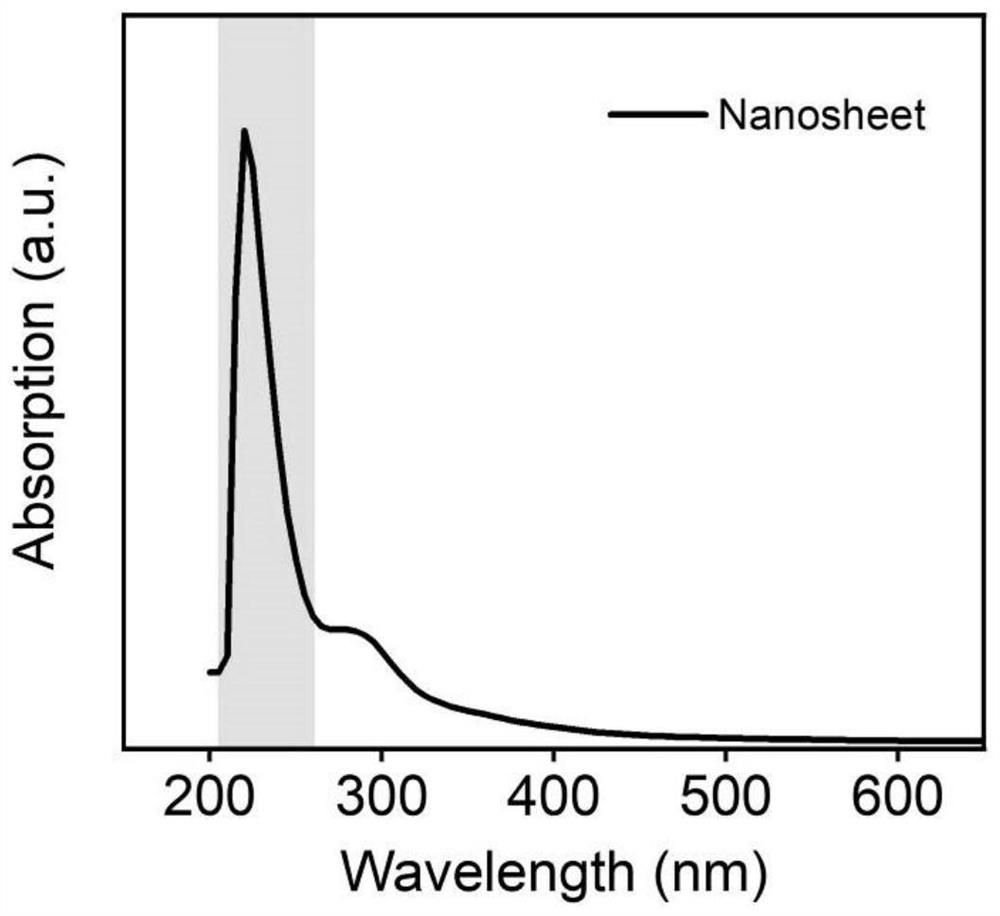Cell-derived fluorescent carbon nanosheet as well as preparation method and application thereof
A carbon nanosheet and fluorescence technology, applied in nanocarbon, nanotechnology, nanotechnology and other directions, can solve the problems affecting the application of two-dimensional fluorescent carbon nanomaterials, and achieve good photothermal conversion ability, good chemical composition, and fast growth speed. Effect
- Summary
- Abstract
- Description
- Claims
- Application Information
AI Technical Summary
Problems solved by technology
Method used
Image
Examples
Embodiment 1
[0055] (1) Absorb the culture medium from the adherent HeLa tumor cells grown in logarithmic phase in DMEM medium, wash with PBS (pH7.2) three times, add trypsin-EDTA and let stand for 5min, observe the cells slowly under the microscope After becoming round to remove the adherent state, add DMEM medium equal to trypsin-EDTA and mix thoroughly. After mixing, centrifuge at 1000rpm for 5 minutes. Remove the supernatant and mix the precipitate with deionized water at a mass ratio of 1:5.
[0056] (2) After the above solution is transferred to the reactor, put it into a high-temperature oven, react at 180° C. for 22 hours, stop the reaction, wait for the reactor to be slowly cooled to room temperature, take out the solution from the reactor and perform suction filtration, and remove the filter residue. An aqueous solution of fluorescent carbon nanosheets is obtained.
[0057] (3) freeze-drying the aqueous solution of fluorescent carbon nanosheets obtained in step (2) to obtain soli...
Embodiment 2
[0059] (1) The adherent MCF-7 tumor cells grown in logarithmic phase cultured in the medium were sucked off the medium, washed three times with PBS (pH7.2), added trypsin-EDTA and left for 5 minutes, and observed under the microscope that the cells slowed down. After slowly becoming round to remove the adherent state, add DMEM medium equal to the amount of trypsin-EDTA and mix well. After mixing, centrifuge at 1000rpm for 5 minutes. After removing the supernatant, the precipitate and deionized water are uniform at a mass ratio of 1:10.
[0060] (2) After the above solution is transferred to the reactor, put it into a high-temperature oven, react at 160° C. for 24 hours, stop the reaction, wait for the reactor to be slowly cooled to room temperature, take out the solution from the reactor and perform suction filtration, and remove the filter residue. An aqueous solution of fluorescent carbon nanosheets is obtained.
[0061] (3) freeze-drying the aqueous solution of fluorescent ...
Embodiment 3
[0063] (1) The adherent HepG2 tumor cells grown in logarithmic phase cultured in the medium were sucked off the medium, washed three times with PBS (pH 7.2), added trypsin-EDTA and left for 5 minutes, and the cells slowly changed under a microscope. After removing the adherent state, add DMEM medium equal to trypsin-EDTA and mix well. After mixing, centrifuge at 1000rpm for 5 minutes. After removing the supernatant, the precipitate and deionized water are evenly mixed at a mass ratio of 1:10.
[0064] (2) After the above solution is transferred to the reaction kettle, put it into a high-temperature oven, react at 200°C for 20h, stop the reaction, wait for the reaction kettle to be slowly cooled to room temperature, take out the solution from the reaction kettle and carry out suction filtration, and remove the filter residue, An aqueous solution of fluorescent carbon nanosheets is obtained.
[0065] (3) freeze-drying the aqueous solution of fluorescent carbon nanosheets obtaine...
PUM
| Property | Measurement | Unit |
|---|---|---|
| diameter | aaaaa | aaaaa |
| thickness | aaaaa | aaaaa |
Abstract
Description
Claims
Application Information
 Login to View More
Login to View More - R&D
- Intellectual Property
- Life Sciences
- Materials
- Tech Scout
- Unparalleled Data Quality
- Higher Quality Content
- 60% Fewer Hallucinations
Browse by: Latest US Patents, China's latest patents, Technical Efficacy Thesaurus, Application Domain, Technology Topic, Popular Technical Reports.
© 2025 PatSnap. All rights reserved.Legal|Privacy policy|Modern Slavery Act Transparency Statement|Sitemap|About US| Contact US: help@patsnap.com



